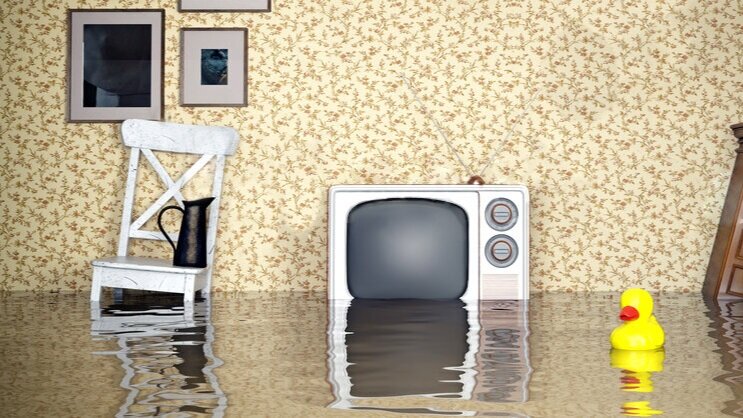What To Do When Your Basement Floods!
Do you remember the first time you saw the movie Jaws as a kid? Or maybe it was Friday the 13th? Or, more recently, Stephen King’s It with those crazy red balloons and Pennywise? Yeah – none of those nightmares begin to approach the horror of discovering a flooded basement. Quite frankly, it probably ranks second only to a major house fire on the list of stuff you don’t ever want to happen.
If it does happen, remember the most important rule: never enter a flooded basement. Before doing anything, you must first ensure safety by shutting off the power to your home. Electrical outlets and appliances that are wet or submerged create a highly dangerous and potentially fatal situation.
If the breaker box is in the flooded area, call a qualified electrician to access it. Once the power is off and the basement is deemed safe, remove the water and immediately talk with your insurance company. Furniture and other items you wish to salvage must be removed, wiped down, and placed in an area where they can quickly dry out. Unfortunately, any carpet and padding that has been underwater will undoubtedly need replacing.
Once you've removed the standing water, a flooded basement will not just dry out on its own. You'll need to bring in fans or industrial blowers, and you'll need to clean damaged areas thoroughly. Depending on the severity of the damage, the entire process can take anywhere from two to five days. A wet basement is also a haven for potential mold growth. Damaged drywall may need replacing, and the area may need professional cleaning to prevent future mold development and health hazards.
Of course, the bigger concern is discovering what caused the flooding in the first place. A good starting place is making sure your gutters are clean and successfully diverting water away from your home. This may require having gutter extensions. Another preventative measure to consider is waterproofing your basement. Fair warning here – this is a very labor-intensive job requiring special tools and training. It is not something even the handiest DIYer should attempt to undertake.
Ultimately, the proper repair is to install a French drain system with a sump pump. This is not an inexpensive undertaking, but it will save you thousands of dollars in the long run over the life of your home. A short-term quick fix would be putting in a temporary sump pump that prevents water from settling in your basement until a proper French drain system can get professionally installed. Using a liner along the exterior walls can help ensure that moisture stays away from the interior of the basement and that all water intrusion leads to the drain system.
You may also need to regrade areas of your yard to assist in directing water away from your home and preventing water intrusion. Vent wells can also help keep water from entering through your foundation openings.
Hopefully, you’ll never find yourself starring in this nightmare production, but if you do, proceed with caution and care. A flooded basement is far scarier than that monster under your bed.

